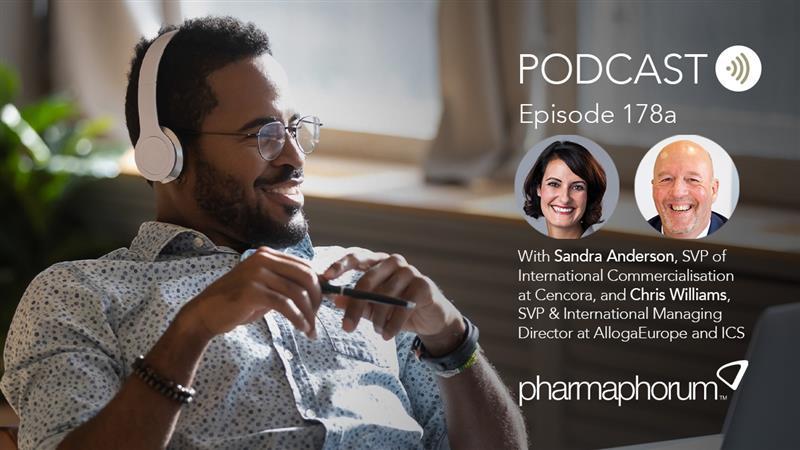Cell therapy transportation and storage with hydrogels

The pharmaceutical industry is grappling with the challenges associated with the storage and transportation of cell therapies. Maintaining the cold chain can be challenging and, depending on specific requirements, extremely expensive.
Most cell therapies are either transported fresh at refrigeration temperatures or in cryogenic storage at -150°C to -196°C. Transporting fresh cells can only occur within a short time frame, which is dependent on the type of cell, but typically is limited to five days. Any long-term storage of cells requires cryopreservation.
The table below summarises the type of storage conditions required for different therapies and the challenges associated with each.

With any of the storage conditions listed in the table, there is the risk of temperature fluctuations during transportation, leading to product deterioration and loss. Providing refrigerated vehicles, storage, and backup power systems is costly and resource-intensive, requiring both infrastructure and personnel.
Cryopreservation is the most common approach for commercial cell therapies. However, small hospitals and clinics cannot be expected to maintain their own liquid nitrogen storage facilities. A work-around is small temperature-controlled transport units, but when utilised with untrained staff, they are prone to failure in resource-limited environments.
In addition, the cost of transporting these fragile therapies on liquid nitrogen instantly increases the cost of the therapy. And, even with optimal freezing and thawing procedures, cells can lose viability and function, leading to lower yields of healthy cells after thawing.
Hydrogel approaches to stabilising advanced therapies
Multiple approaches are being undertaken to solve the logistics challenges outlined above, and one of the most promising is the use of hydrogels. Hydrogel encapsulation or suspension has been shown to provide a protective insulator for cells. Hydrogels are viscoelastic materials that have been used extensively in tissue engineering and drug delivery, as they can mimic a conducive microenvironment for the cells. More recently, hydrogels have been used for logistics challenges like preserving 3D bioprinted artificial tissues1.
Hydrogels have been shown to minimise the significant cell damage normally occurring during the freeze/thaw processes associated with cryopreservation. Ice crystals can form both inside and outside cell walls during freezing, and can grow while recrystallising during thawing. The crystals themselves can damage the cells, while the remaining unfrozen water can cause hypertonic dehydration. Traditional cryoprotectants like DMSO can also damage cells. Hydrogels can protect the cells by limiting the ice crystal expansion and minimise the osmotic shock associated with traditional cryoprotectants2.
A few companies, including ours, are focused on using hydrogels to stabilise fragile cells for shipping and storage. One of the first to test the ability of hydrogels to assist in logistical challenges was published in 2005, using poly(ethylene)glycol (PEG) microarrays to cryopreserve both primary and immortalised cells3. Since then, research publications illustrating improved cryopreservation with hydrogels have demonstrated improved outcomes for over 20 different cell types. The types of hydrogels also vary from alginate4 to polyvinyl alcohol (PVA)5 to polylactide-co-glycolide (PLAGA)6. In each case, the studies concluded that the addition of a hydrogel to the cryopreservation process improved the cellular outcome.
In addition, hydrogels have been used to maintain cells at warmer temperatures without requiring freezing. In a recent study, human mesenchymal stem cells (MSCs) were stored for five days with high viability in alginate14. Separately, magnetic microparticles of hydrogels have been used to maintain cells without cryopreservation, and the beads could easily be removed from the cells suspension with magnets15. In another experiment, cultured myoblasts were suspended in a hyaluronic acid (HA) hydrogel and underwent mock shipping conditions at room temperature for five days. Similar to the MSC study, the viability of the cells in the hydrogel was greater than the cells without HA.
A promising new approach uses a hydrogel-based powder that can be hydrated to create a gel. The gel can be added to cell suspensions including leukopaks to preserve the cells at either fresh temperatures or in a cryopreserved state. Because different cells require unique microenvironments, whether for fresh refrigerated shipping or cryopreservation, different formulations have been developed for specific cell and tissue types. The family of products represent a non-cytotoxic approach that avoids the use of oil emulsions that are not conducive to cell viability, and is based on scaled manufacturing, rather than bioprinting, which can be scaled out (with multiple printers) but not easily scaled up. By leveraging the well-established chemistry of hydrogels, it enables the creation of innovative combinations of backbone chemistries and crosslinkers, providing precise control over the stiffness and diffusion characteristics of microparticles, allowing customisation of the microparticles to meet the needs of different cell types.
Future of cryopreservation
More recently, the cryopreservation of tissue samples and organoids has taken on new urgency for regenerative medicine7,8. Cryopreservation of a single cell type is a complex process that requires protocols specifically optimised to that cell type. When multiple cell types are involved, the process becomes exponentially more complex. But some of the work done today with hydrogels for cell therapies suggest even more complex applications are possible.
The thermodynamic and kinetic forces occurring when cryopreserving and thawing three-dimensional organoids results in non-uniform temperature changes through the organoid. Biological tissues have relatively low thermal conductivity requiring completely novel procedures. For example, in our own research in the cryopreservation of multi-cellular pancreatic islets, we found that the best outcomes occurred when we dissociated the islets into single cells, cryopreserved them, and then reaggregated them after thawing9.
Beyond single cell cryogenics, hydrogels have been utilised for the storage of intact tissue samples, and represent a promising approach. Going back to 2003, a group from the University of Virginia showed that they could cryopreserve engineered bone constructs in a PLAGA hydrogel with greater cell survival6. Tissue samples such as ovarian tissues10, skin constructs11, pancreatic islets12, and corneal lenticules13 have been successfully cryopreserved in hydrogels.
The utilisation of hydrogels for the storage and transportation challenges associated with cell therapies – and beyond – will continue to gain favour. A number of hydrogels are already familiar to regulatory bodies and have been shown to be biologically inert. Their broad application in a variety of cell categories including 3D organoids will help to bring down the costs associated with cell therapy logistics while ensuring a more functional product for the patient.
References
- Budharaju H, Sundaramuthi D, Sethuraman S. Biofabrication & cryopreservation of tissue engineered constructs for on-demand applications. Biofabrication. 2024;16:4.
- Zhang C, Zhou Y, Zhang L, et al. Hydrogel cryopreservation system: an effective method for cell storage. Int J Mol Sci. 2018;19(11):3330.
- Itle L, Pishko M. Cryopreservation of cell-containing poly(ethylene) glycol hydrogel microarrays. Biotechnology Prog. 2005;21(3):1004-1007.
- Wang X, Xu H. Incorporation of DMSO and dextran-40 into a gelatin/alginate hydrogel for controlled assembled cell cryopreservation. Cryobiology. 2010;61(3):345-351.
- Vrana N, Matsumura K, Hyon S-H, et al. Cell encapsulation and cryostorage in PVA-gelatin cryogens: incorporation of carboxylated e-poly-L-Lysine as cryoprotectant. J Tissue Eng Regen Med. 2012;6(4):280-290.
- Kofron M, Opsitnick N, Attawia M, Laurencin C. Cyropreservation of tissue engineered constructs for bone. J Orthopedic Res. 2023;21(6):1005-1010.
- Sirayapiwat P, Amorin C, Sereepapong W, Tuntiviriyapyun P, Suebthawinkul C, Thuwanut P. Application of fibrin-based biomaterial for human ovarian tissue encapsulation and cryopreservation as alternative approach for fertility preservation. Cryobiology. 2024;117:104955.
- Lee J-H, Park H-J, Kim Y-A, et al. Selecting serum-free hepatocyte cryopreservation stage and storage temperature for the application of an “off-the-shelf”bioartifical liver. Sci Rep. 2024;14:12168.
- Rawal S, Harrington S, Williams S, Ramachandran K, Stehno-Bittel L. Long-term cryopreservation of reaggregated pancreatic islets resulting in successful transplantation in rats. Cryobiology. 2017;76:41-50.
- Amorim C, Van Langendonckt A, David A, Dolmans M-M, Donnez J. Survival of human pre-antral follicles after cryopreservation of ovarian tissue, follicular isolation and in vitro culture in a calcium alginate matrix. Hum Reprod. 2009;24(1):92-99.
- Tan J, Li J, Zhou X. The crystallization properties of antifreeze GelMA hydrogel and its application in cryopreservation of tissue-engineered skin constructs. J Biomed Mater Res B Appl Biomater. 2024;112(5):e335408.
- Chen W, Shu Z, Gao D, Shen A. Sensing and sensibility: single-islet-based quality control assay of cryopreserved pancreatic islets with functionalized hydrogel microcapsules. Adv Health Mater. 2015;5(2):223-231.
- Zhang Z, Yu Y, Sun B, et al. Long-term follow-up of SMILE-derived corneal stromal lenticules preserved in nutrient capsules for treating corneal disease. BMC Ophthalmol. 2025;25:64.
- Chen B, Wright B, Sahoo R, Cannon C. A novel alternative to cryopreservation for the short-term storage of stem cells for use in cell therapy using alginate encapsulation. Tissue Eng Part C. 2013;19(7):568-576.
- Yang J, Zhu Y, Xu T, et al. The preservation of living cells with biocompatible microparticles. Nanotechnology. 2016;27(26):265101.













